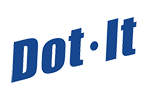What Should be in a Restaurant First Aid Kit?
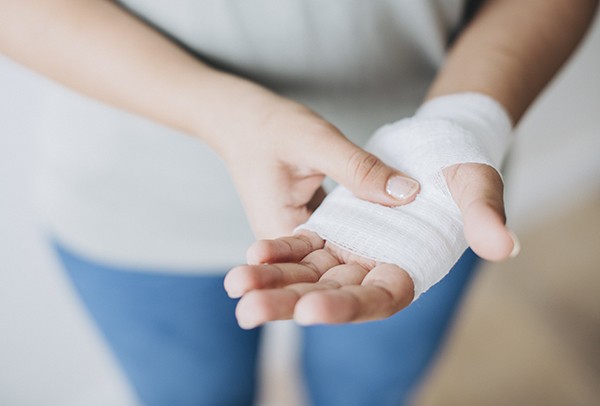
A properly stocked first aid kit and safety training will mitigate the occurrence and severity of most accidents that take place in commercial kitchens. Knowing what should be in a restaurant first aid kit, how many kits you need, and where and how to properly administer first aid is essential for any food operator.
First Aid Kit Contents
A well-stocked first aid kit will contain an adequate supply of items required by a specific industry. All items should be clean and up-to-date (non-expired). While OSHA doesn’t specify the required elements to be placed in a first aid kit, they do state that “adequate first aid supplies shall be readily available.” 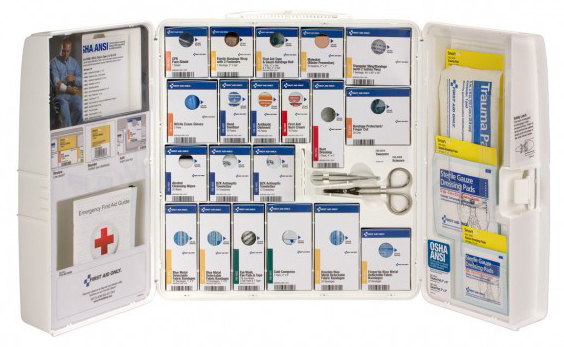
First aid kit supplies should cover the five areas of injuries:
Major injuries or trauma
- (1) Scissors
- (1) Forceps
- (10) Gauze pads
- (1) Adhesive tape
- (1) Tourniquet
- (1) Mouth barrier for CPR
- (1) First aid guide
Minor injuries (small cuts and scrapes)
- (50-100) Blue bandages
- (50-100) Blue finger cots
- (1) Cold packs
- (20) Antiseptic wipes
- (10) Hand sanitizer
- (1) Bodily fluid cleanup kit
Eyecare
- (1) Eye wash station with solution refills
- (2) Eye pads
Burn care
- (1) Burn spray
- (1) Burn cream
- (1) Burn dressing
Employee comfort/convenience
- (1) Cold/allergy treatments
- (1) Pain relievers
- (1) Antacids
ANSI (The American National Standard Institute) provides a handy checklist of non-mandatory minimum requirements for workplace first aid kits.
High Speed Training helpfully adds first aid items that restaurants, in particular, should keep on hand and easily accessible. They also sagely advise that restaurants be able to treat anaphylactic shock should it occur in a patron with a severe food-related allergic response. The Human Medicines Regulations stipulates that non-medical persons may administer emergency medication (adrenaline) to save a life.
What Training Should Employees Have? 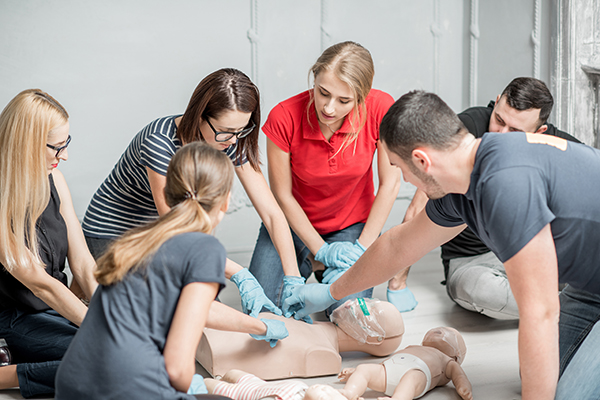
All restaurant employees, front and back of house, should be trained in basic first aid. Safety training, ideally, is given every year so that it remains fresh in employees’ minds. One or two full-time employees should have CPR instruction, know the Heimlich maneuver (for choking) and be taught how to administer adrenaline to a distressed patron in anaphylactic shock.
How Many Kits Do I Need? 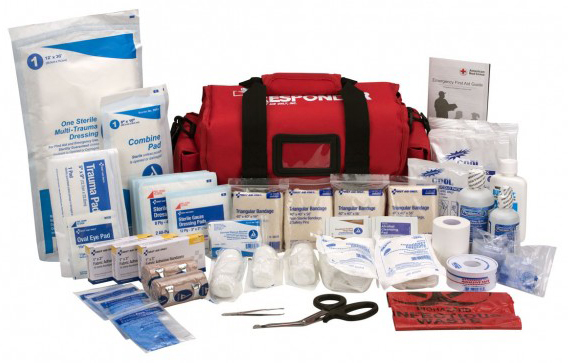
It's recommended to have a first aid kit readily available in all common areas of your food service establishment. This often includes one in the kitchen, one in the staff/break room, and one in the front of house. If you offer food delivery, it's recommended to have a first responder kit available in the truck as well so first aid can be administered on the go as well. First aid kits should be easily accessible and all employees should know where kits are kept. Kits should be checked on a periodic basis, i.e. monthly, to ensure supplies are fully stocked and not expired. The ‘patron-centric’ emergency supplies, i.e. adrenaline pens and mouth barriers for CPR may be kept front of house to be on hand quickly.
Assembling your first aid kit and training your employees will leave you in excellent condition should an accident happen. Inevitably, one will, but with the preparation you’ve accomplished, you’ll be able to handle it like a pro!
